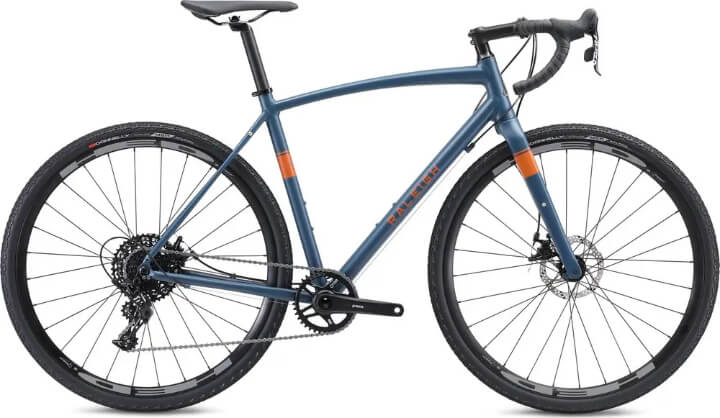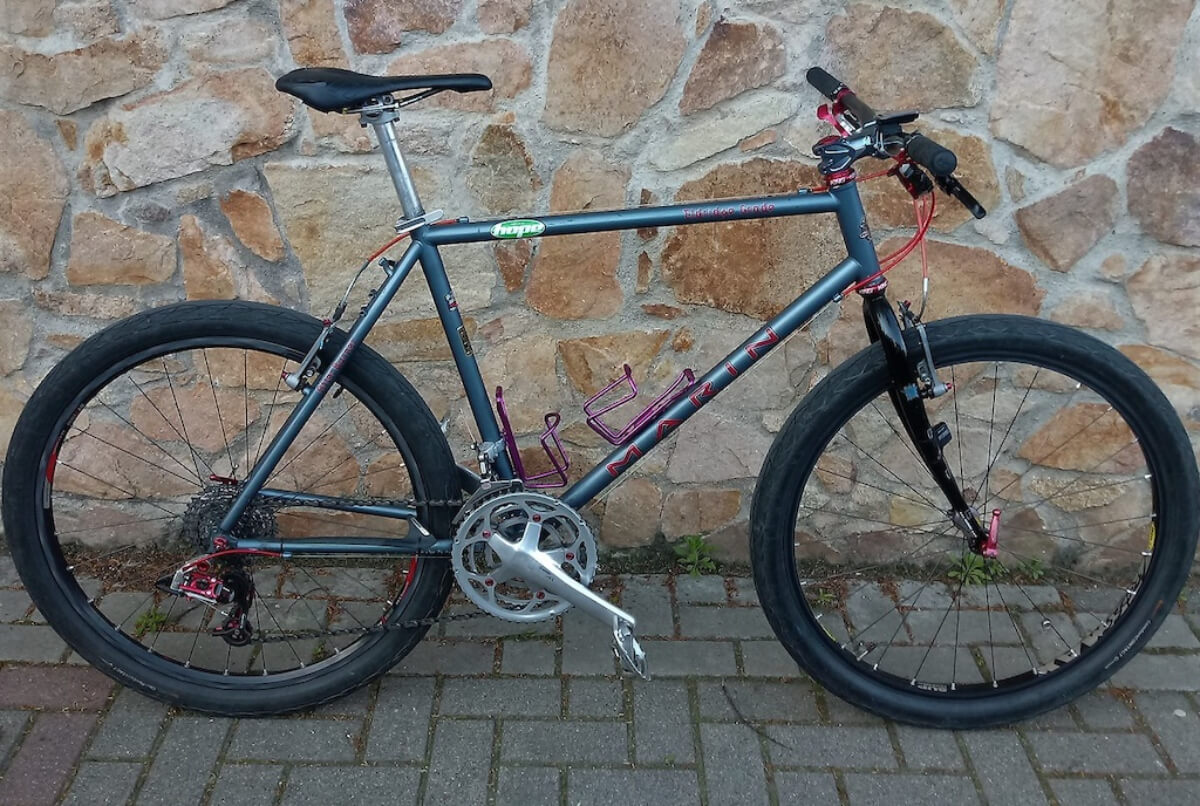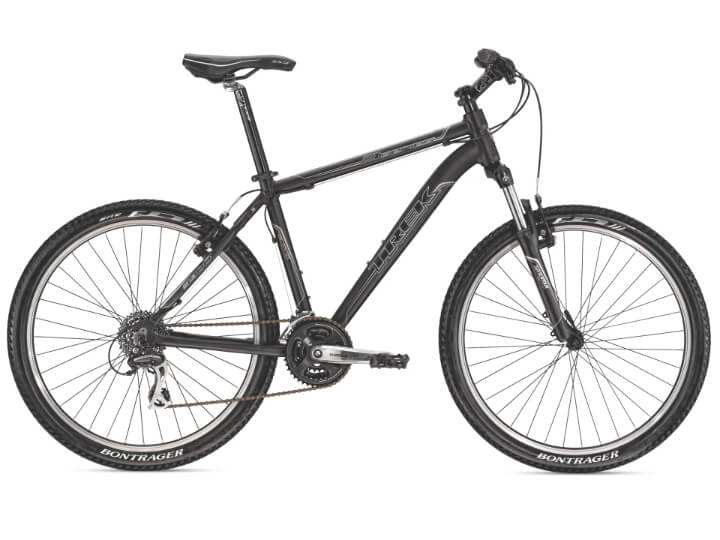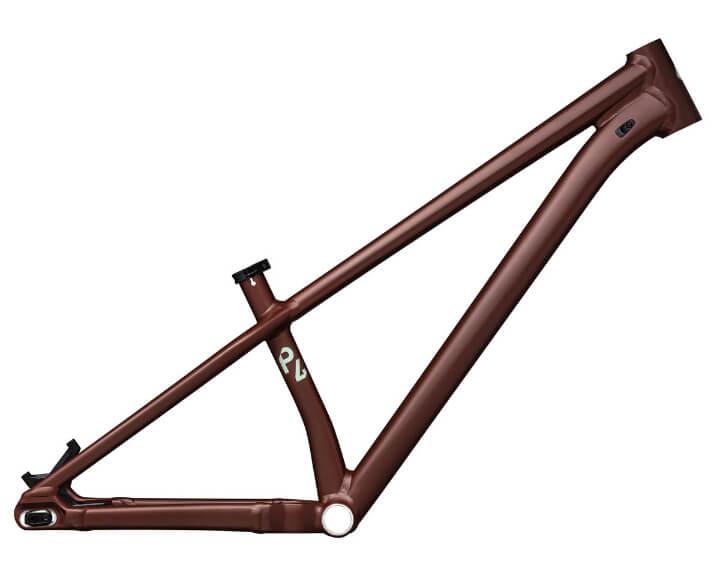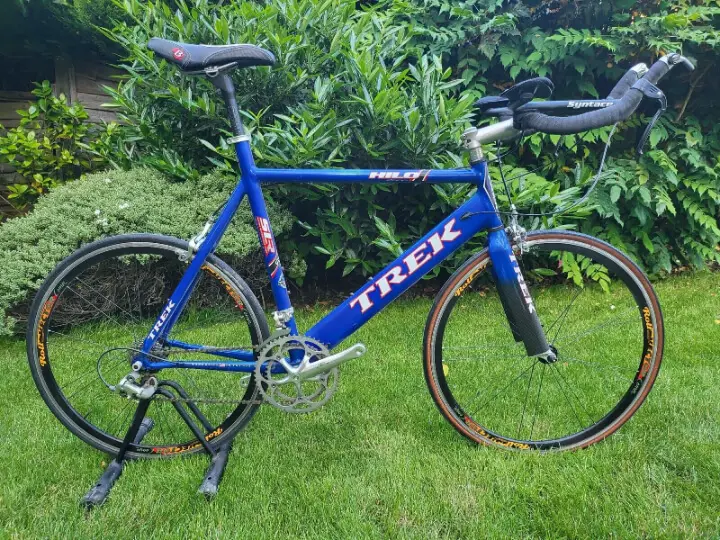
Ever wondered if a vintage road bike could still hold its own in today's high-tech cycling world? Enter the Trek 1000, a classic model that has been turning heads since the 1980s.
As an avid cyclist with a passion for both modern and retro bikes, I've taken the Trek 1000 for a spin to see if it lives up to its legendary status.
In this review, we'll explore whether this time-honored bike blends nostalgia with performance, or if it's simply riding on the coattails of its past glory. Gear up as we delve into the world of the Trek 1000.
Review of: Trek SL 1000
Uses: Road Bike
We Like
Timeless, classic design
Lightweight aluminum frame
Efficient gear system
Low maintenance costs
Durable construction
We Don't Like
Some stability issues
Unconventional gear shifting
Uncomfortable for beginners
Not suitable for racing
Hard to find parts
Check Latest Price
Trek History and Information
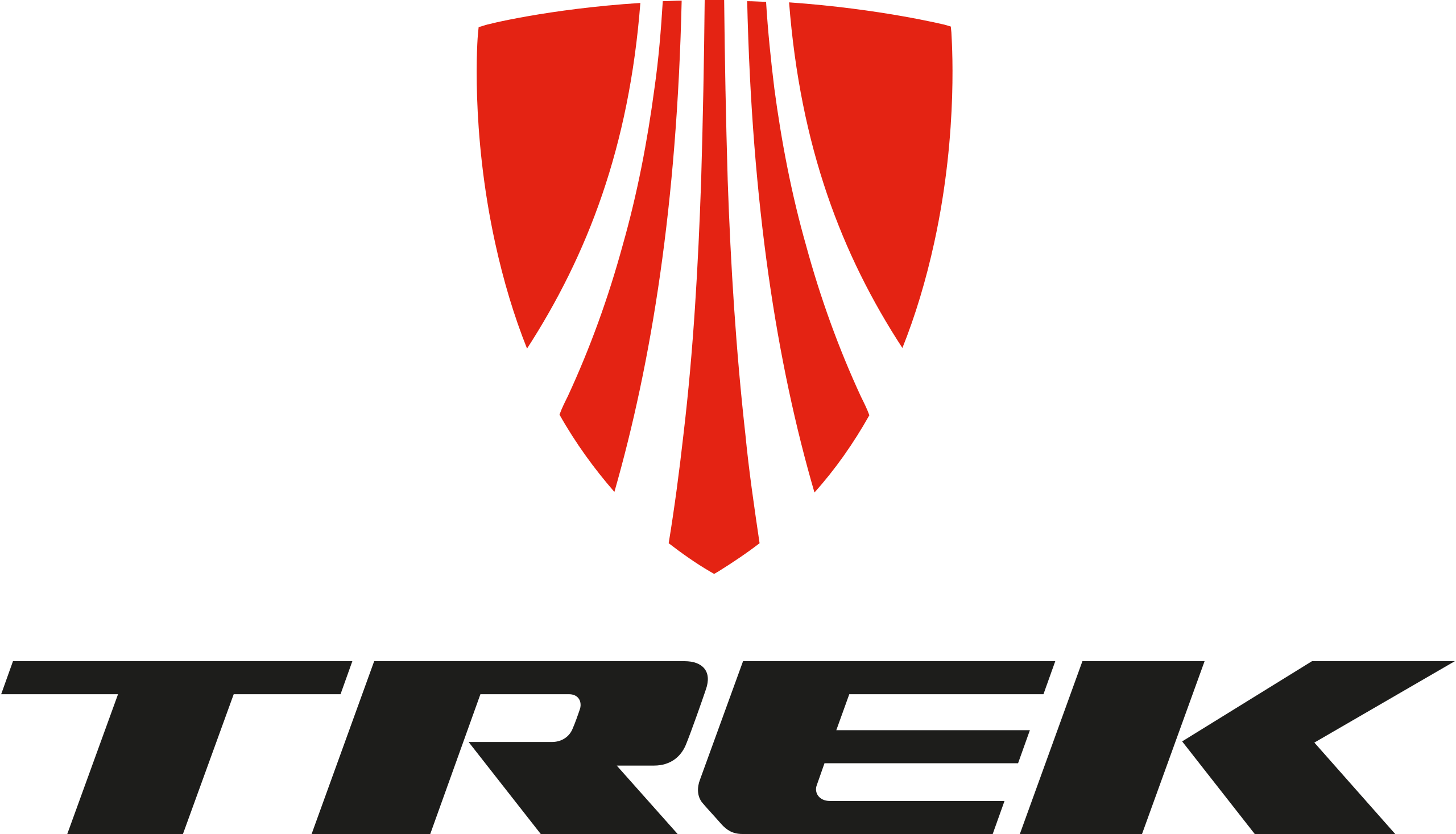
Trek Bicycle Corporation, established in 1976 by Richard Burke and Bevil Hogg, is a prominent bicycle manufacturer headquartered in Waterloo, Wisconsin, USA. Starting in a small red barn with steel touring frames, Trek has evolved into one of the leading global bike producers, distributing in over 90 countries.
Trek has consistently led in cycling innovations. Key milestones include the 1984 debut of the bonded aluminum Trek 2000 frame, the 1992 launch of the first carbon fiber mountain bike (Trek 9800), the 1999 introduction of the first full-suspension carbon fiber mountain bike (Trek Fuel), and in 2012, the unveiling of the first full-suspension 29er carbon fiber mountain bike (Trek Superfly).
The company has also pioneered in integrating technology into bike production. It introduced the first CAD-designed frame (Trek 9900) in 1992 and the first CAM-manufactured frame (Trek Y-22) in 1995.
Trek's current lineup includes road, mountain, hybrid, electric bikes, and more. It also owns Electra Bicycle Company, Bontrager, and Diamant.
Click Here to Check Best Price
Trek SL 1000 Review
- Timeless, classic design
- Lightweight aluminum frame
- Efficient gear system
- Low maintenance costs
- Durable construction
- Some stability issues
- Unconventional gear shifting
- Uncomfortable for beginners
- Not suitable for racing
- Hard to find parts
![]() Photo by rhodiumc
Photo by rhodiumc
Background and Evolution
The Trek 1000, a marvel of road biking introduced in the 1980s, became a notable presence in the cycling world during the 1990s. Its design hinted at the future of road bikes, blending a modern aesthetic with advanced construction for its time. This bike's evolution over the years has transformed it from a cutting-edge option to a cherished vintage piece, maintaining its popularity and value.
Specifications and Build
This iconic bike is known for its Alcoa 6061 T6 Aluminum frame, providing durability and lightness. The Trek 1000 includes a Tange Cro-Moly fork, Shimano Exage and 400 EX components, Bontrager Sport crankset, and 700 x 25c Trek IsoTech 3 tires, forming a blend of reliability and performance. Notably, the bike's weight is approximately 23 lbs, making it slightly heavy compared to contemporary models.
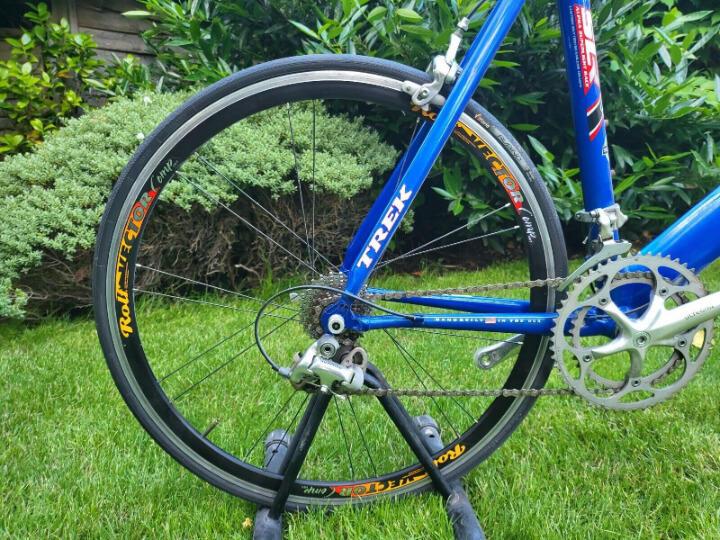
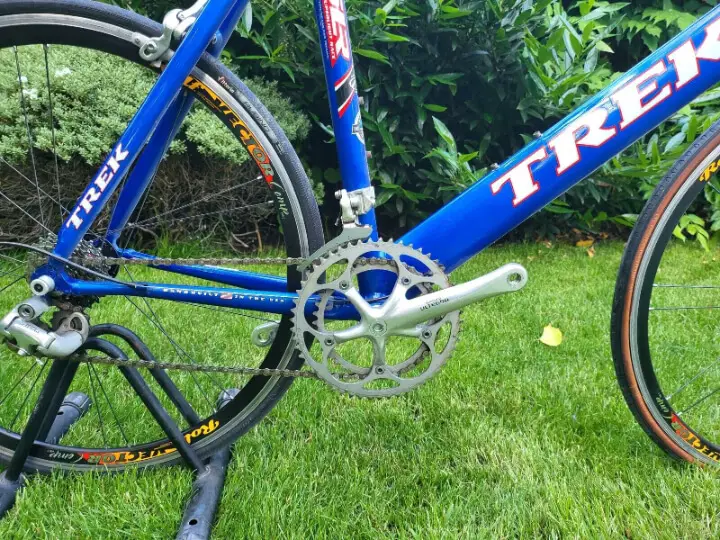
![]() Photo by rhodiumc
Photo by rhodiumc
Performance and Riding Experience
The Trek 1000's 14-speed configuration and Shimano gear set support long-distance riding and steep climbs. Its design, with skinny tires and an 8-gear setup, enables fast speeds suitable for long routes. However, the gear shifter's placement behind the handlebar may require an adjustment period for those used to more modern designs.
What We Like
- Timeless Design: The Trek 1000's classic look remains stylish and practical.
- Lightweight Frame: Its aluminum construction ensures speed and ease of handling.
- Climbing Efficiency: The gear set is optimized for handling hills and slopes.
- Low Maintenance: Known for its reliability, the Trek 1000 doesn't frequently break down.
- Durability: The frame has proven its longevity and robustness over time.
What We Don't Like
- Stability Issues: Some users have reported occasional instability.
- Unconventional Shifting Style: The gear shifter location may be inconvenient for new users.
- Riding Position for Beginners: The aerodynamic riding position might be uncomfortable for new cyclists.
- Not Ideal for Competitive Cycling: The Trek 1000 might not be the best choice for racing due to its weight and componentry.
- Maintenance of Vintage Parts: Finding replacement parts can be challenging, requiring specialized bike shop assistance.
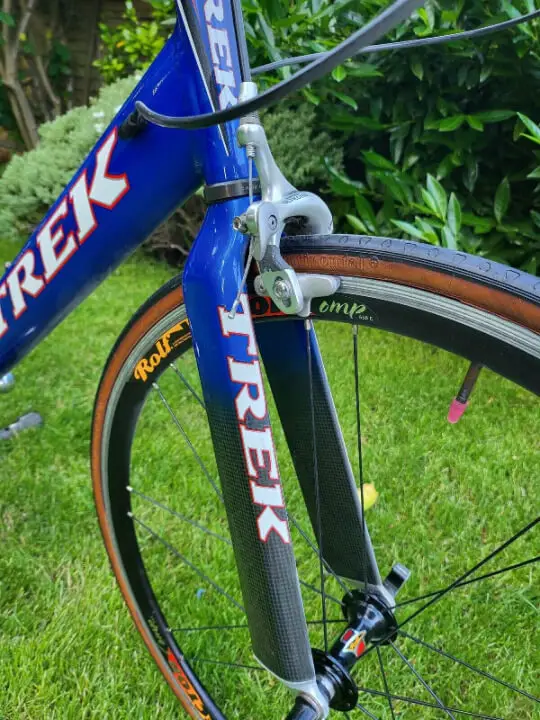
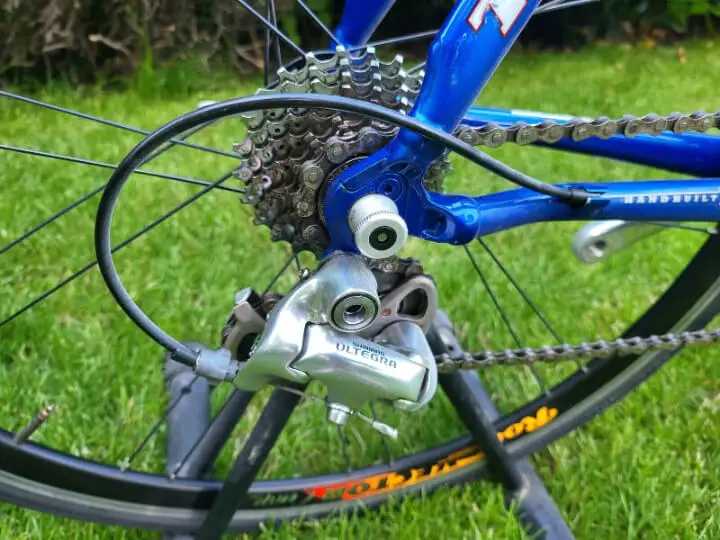
![]() Photo by rhodiumc
Photo by rhodiumc
Verdict
The Trek 1000 is a commendable choice for those seeking a vintage road bike with a blend of reliability and performance. Its enduring popularity is a testament to its quality, making it a great option for commuting and leisure rides. However, for competitive cycling, newer models might offer more advantages.
Specifications
- Frame: Alpha SL Aluminum
- Fork: Bontrager Approved, carbon
- Headset: Aheadset Slimstak with semi-cartridge bearings, sealed
- Stem: Bontrager Select, 17 degree
- Handlebar: Bontrager Sport, 26.0mm
- Saddle: Bontrager Race Basic Lux
- Seatpost: Bontrager Carbon
- Pedals: Alloy/nylon road with clips and straps
- Rear Derailleur: Shimano Tiagra
- Front Derailleur: Shimano 2203
- Crank: Bontrager Sport 52/42/30
- Shifters: Shimano Sora STI, 8 speed
- Cassette: SRAM 850 12-26, 8 speed
- Brakes: Alloy dual pivot with Shimano Sora STI levers
- Rims: Alloy hubs; Alex alloy rims with eyelets
- Tires: Bontrager Select, 700x25c
Pricing and Availability
Although Trek no longer sells this bike you can find it quite easily on second-hand websites. While researching for this review I came across around a dozen similar bikes on eBay. They ranged in price from $100 to $250.
The prices will now depend mainly on the age and condition of the parts/paint. These bikes are flexible and will accept off-brand parts if you ever want to resurrect one.
Competing Products
The Trek SL 1000 is a relatively affordable road bike designed for everyday use. It's no longer widely available but Trek kept it simple and reliable with the parts and construction.
There's a large market for bikes like this as they're perfect for adults who aren't fully into road bikes. They can be used for a trip to the shops or commuting to work.
If you're looking for an alternative to this bike I would recommend looking at >brands like Giant and Cannondale
Frequently Asked Questions
Why are Trek road bikes so heavy?
Some Trek road bikes are known for their heavy weight, which is attributed to several design features and components. These include the T47 shell, disc brakes, and IsoSpeed systems, as well as oversized tires, built-in storage compartments, and wide tire clearance.
Are Trek aluminum frames good?
Trek's aluminum frames, particularly their Alpha Aluminum, are highly regarded in the cycling community. These frames are known for being strong, light, and providing a ride quality comparable to many carbon frames. Trek's aluminum frames are refined and advanced, incorporating technologies like Invisible Weld Technology, which enhances structural integrity while keeping the frames aesthetically pleasing and lightweight. These frames are durable, reasonably lightweight, and affordable, making them a popular choice among cyclists.
Are Trek frames made in China?
Yes, a significant portion of Trek bike frames are manufactured in China, as well as in Taiwan, the Netherlands, Germany, and the United States. While Trek designs its bikes and accessories in the US, over 99% of their production occurs outside the US, predominantly in China and Taiwan. This trend reflects the broader global bike manufacturing landscape, where many brands outsource production to these countries. Trek's US facilities are primarily used for research and development (R&D) and assembly processes.

